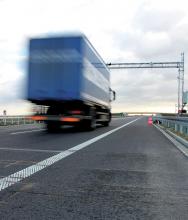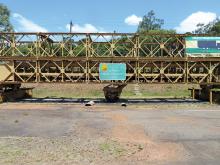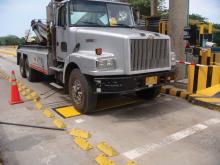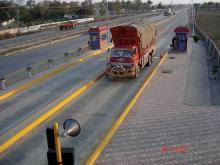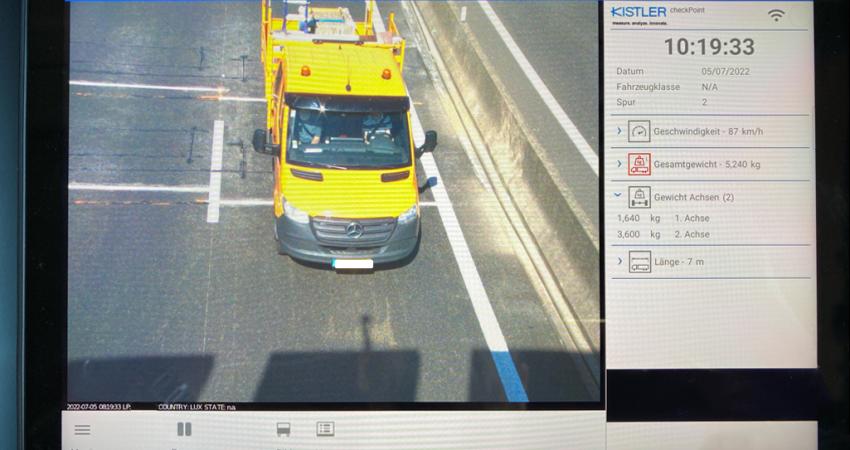One leading Weigh in Motion technology manufacturer is helping governments in developing countries reduce excessive road damage, while several others have seen their latest WIM systems recently used on the highways of Eastern Europe. Guy Woodford reports Recent Central Weighing WIM installations in Bangladesh are helping its national government reduce the financial burden of excessive road damage, while also protecting many bridges that are vital to transport and trade. The need for such installations was e
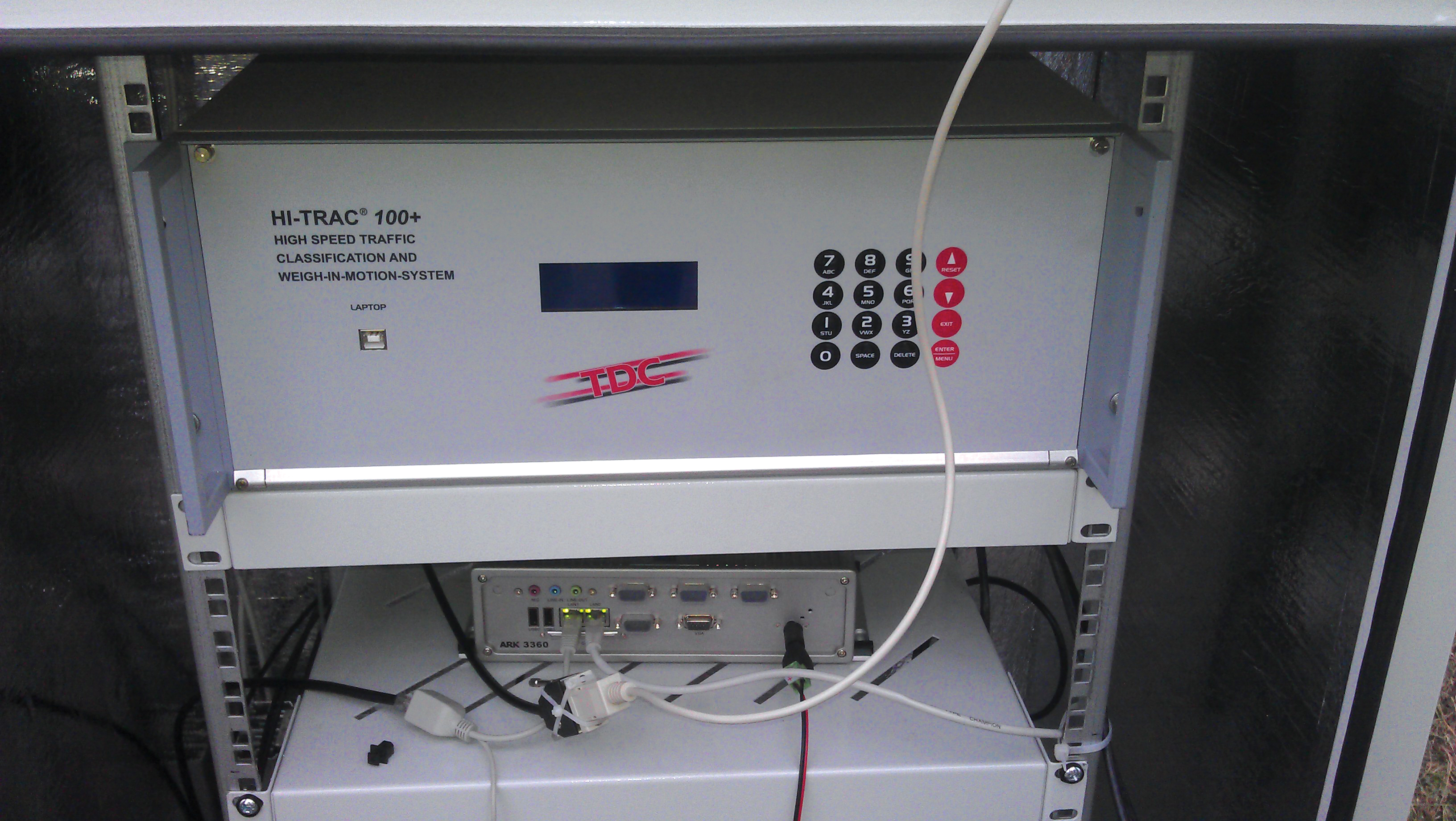
TDC Systems have this year installed three pre-selection WIM systems on highways in Poland
One leading Weigh in Motion technology manufacturer is helping governments in developing countries reduce excessive road damage, while several others have seen their latest WIM systems recently used on the highways of Eastern Europe. Guy Woodford reports
RecentThe need for such installations was emphasised by a new government survey in the Philippines, conducted for the
“These are incredible figures, but particularly in developing countries where the scarce financial resources are being wasted needlessly on the results of overloading when they could be being used to fund food programs and essential services such as hospitals and schools,” said Richard Stokes, managing director of Central Weighing.
“In countries where weight-based road tolling is being introduced, Central Weighing has offered a wide range of peripheral equipment to both fully automate the [WIM road tolling] sites and prevent fraud.”
Stokes said the peripheral equipment offered includes Automatic Number Plate Recognition cameras. The ANPR cameras capture vehicle and license plate data which is stored with the vehicle weight data as definitive evidence for prosecution.
Other equipment includes optical automatic vehicle classification systems, which remove any human error from data input and recording, and secure internet-based reporting software, developed by Central Weighing, which gives governments the ability to view live data produced from all sites from any location in the world. Stokes said the weighing data is transferred to a secure centralised site instantaneously on the weighing of the vehicle, eliminating the possibility of data corruption.
“Central Weighing continue to advise and educate governments around the world with our free Why Weigh Axles training program hoping to introduce this innovative technology and the resultant savings to many more countries,” adds Stokes.
Now part of the
The company said it specialises in the supply of high quality and high accuracy portable and fixed axle vehicle weighing products, which, Central Weighing said, were the first in the world to gain UK, EC and OIML approvals.
The UK-based firm currently has over 4,000 systems installed in 35 countries.
“In the last five years, the market has changed dramatically as weigh in motion systems have been introduced into road tolls in an attempt to control the overloading of heavy goods vehicles,” explains Stokes.
“This required significant design changes to meet the requirement to weigh up to 8,000 trucks per day. While high speed weigh in motion systems were ideal to weigh trucks at speeds up to 120km/h, they could not produce the accuracy required to enable the authorities in many countries to safely prosecute overloaded trucks.”
Building on what Stokes said was Central Weighing’s strong design features of its slow speed WIM products, the firm developed the SUPAWEIGH 5000c. This new development is said to offer users an increase in speed capability of up to 400%, while retaining a high degree of accuracy and repeatability.
“The market was quick to accept this new design and over 400 systems have recently been shipped in to India for major national highways projects,” said Stokes.
“Pakistan has installed over 30 SUPAWEIGH 5000c systems, and in the first installation at Sanjani over 57% of trucks weighed were found to be seriously overloaded.
“This demonstrated the size of the problem, which costs government many millions every year in premature road repairs and road accidents.”
Stokes said roads in Pakistan designed for a lifespan of 20 years were being destroyed in as little as three years, with trucks bearing individual axle loads as high as 40,000kg, inflicting up to 500 times the road damage created by a legally loaded axle.
The need to deploy quality WIM systems to help combat road damage has also led to Central Weighing installations in the Middle East, Africa, and South America.
Czech Republic-based
The firm said that its enforcement version of the UnicamWIM system has been type approved in the Czech Republic, which means that it can be used for national high-speed direct or back-office highway weight enforcement. Some other WIM company enforcement systems, according to Camea, only have verification certificate approval, which means their weigh readings in the Czech Republic need subsequent confirmatory weighing on static scales.
Camea is expecting to see its UnicamWIM system type approved for use on Russian highways by the end of 2012.
The UnicamWIM enforcement system features include embedded charge amplifiers and inductive loop circuits, configurable sensors setups (staggered half-width sensors, 2-rows and 3-rows of sensors), advanced measurement validity evaluation (accelerating, changing lanes, driving aside sensors), individual wheel sensors (vehicles driving in-between road lanes), vehicle’s wheels position in road lane detection (single/dual tyre detection), sensors temperature compensation, road and sensors wear estimation, and precise time synchronization (GPS). These features allow full monitoring of vehicle behaviour and also enable the extension of violation codes according to the US standards.
The UnicamWIM is said by Camea to provide a rich set of traffic data which is stored in large internal memory in a database format that can be exported in many standard formats and transmitted via standard communication interfaces or accessed by a web-based user interface. The system can be easily equipped with Camea cameras and software for recording the violating vehicle, and Camea ANPR licence plate recognition cameras.
Another optional piece of Camea equipment is the 3D laser scanner which records the vehicle parameters and is able to further refine the classification of the vehicles by registering the vehicle profile.
This WIM system is said by Camea to prevent unauthorised changes to its configuration, and the measured data is protected through the access system. In the enforcement version of the WIM system, all the data is electronically signed and encrypted, so only competent authorities can access the data and no one else can modify it.
Camea said the compact design and modular setting of the UnicamWIM system is another distinct advantage compared to its peers. Various parts are integrated into logically organised modules. The cabinet contains several plug-in module boxes which can be easily disconnected or replaced.
In 2012, Camea’s UnicamWIM enforcement system is being installed for use on ten lanes of a highway in the Czech Republic; two lanes of another highway in Jamaica; and several lanes of a highway in Poland.
During the first half of 2012, fellow Czech Republic firm Cross saw its WIM systems installed on three different highways in South Korea. The systems in Song-Ak, Jin Gyo and Buk Suwon for the Korea Expressway Corporation were put into operation by Korea Traffic Systems. The Cross WIM for the Korea Expressway Corporation features three rows of Kistler LINEAS sensors for each of the three monitored lanes, inclinated MSI piezo sensors for double tire detection, an ANPR camera system and temperature compensation elements. Cross said all these components aim to create a system capable of achieving the highest possible accuracy in both vehicle classification and weight measurement. The WIM systems installed in South Korea also include the potential to monitor emergency lane trespassing.
In Poland,
On the domestic front, Cross is waiting for legislative approval for the Czech Republic wide rollout of its fully automatic WIM enforcement system for detecting overloaded trucks. Cross said the system is due to be deployed by the country’s Ministry of Transport before the end of 2012.
Earlier this year, TDC Systems installed three pre-selection WIM systems on highways in Poland. The first two are located on a bi-directional road where the directional arrays were located either side of a static weigh station on National road DK44 between Mikalów and Gliwice. The third is on the A1 dual-carriageway which runs between Gdansk and the Polish/Czech border.
The specification for the accuracy of the Polish installations was said to be set high and that accuracies of COST323 B+(7) be achieved by the in-road equipment. TDC Systems decided to employ an array of piezo/loop/piezo followed by another piezo/loop/piezo system in the same lane to achieve this level. The sensors used were MEAS BL Class 1 sensors, and the overall system was successfully calibrated to the required level and adopted by the Polish road authorities. In between the two arrays, a thermistor is installed to record the body of the road temperature which then provides information to the Hi-Trac 100+ classifier at the roadside to allow for any variability in temperature being detected by the sensors.
In addition, the in-road array is twinned with ANPR cameras which record the licence plate of the vehicles as they pass over the array. This is said by
All three Polish sites operate in the same way using this twin array system and use the same axle sensors and roadside classification equipment.
The Hi-TRAC 100+ is used around the world for WIM recording, including at TDC Systems recent installations in Saudi Arabia. The Department for Transport in the UK also has in excess of 200 of these roadside classifiers operating on British highways.

